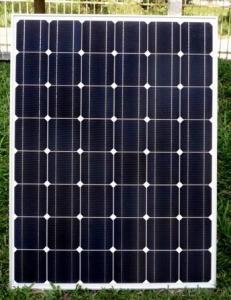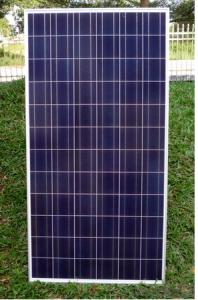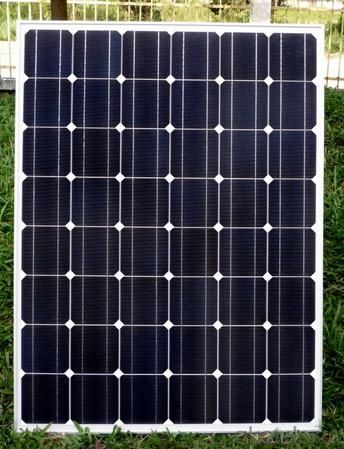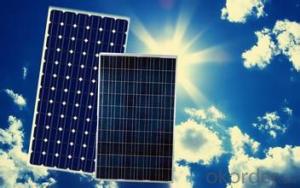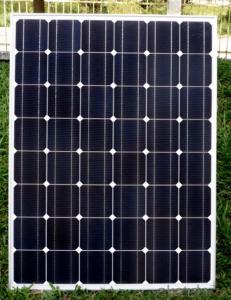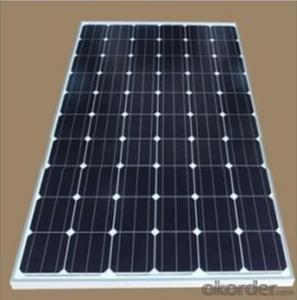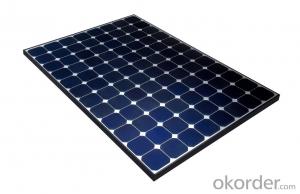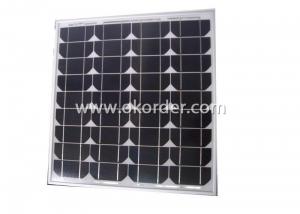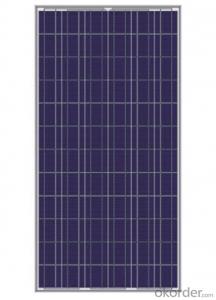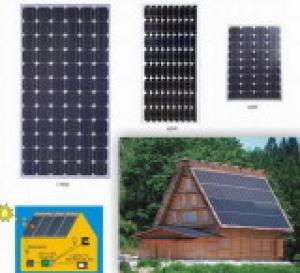90w CNBM Monocrystalline Silicon Solar Panels in Series or Parallel for Home Use
- Loading Port:
- China main port
- Payment Terms:
- TT OR LC
- Min Order Qty:
- 100 watt
- Supply Capability:
- 1000 watt/month
OKorder Service Pledge
OKorder Financial Service
You Might Also Like
Specification
90W CNBM Monocrystalline Silicon Panel for Home Using
Production description
They produce a relatively high-efficiency conversion for the low cost compared to other solar technologies. Also, high-cost, high-efficiency, and close-packed rectangular multi-junction (MJ) cells are preferably used in solar panels on spacecraft, as they offer the highest ratio of generated power per kilogram lifted into space. MJ-cells are compound semiconductors and made of gallium arsenide (GaAs) and other semiconductor materials. Another emerging PV technology using MJ-cells is concentrator photovoltaics (CPV).
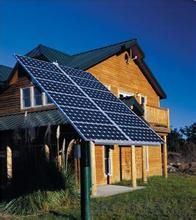
Feature
1.High conversion efficiencies resulting in superior power output performance.
2.Outstanding power output even in low light or high temperature conditions
3.Optimized design for ease of soldering and lamination
4.Long-term stability,reliability and performance
5.Low breakage rate
6.Color uniformaity
Physical characteristic
1. Rigorous quality control meets the highest international standards.
2. High-transmissivity low-iron tempered glass, strong aluminium frame.
3. Using UV-resistant silicon.
4. IS09001/14001/CE/TUV/UL
- Q: Rooftop solar panel (not sure if rubber or plastic?) has leak arising from thin vertical crack in panel about long. Any ideas for repair?Thanks.
- Pool Solar Panel Repair
- Q: Are there any tax credits available for solar panel installation?
- Yes, there are tax credits available for solar panel installation. The federal government offers a solar Investment Tax Credit (ITC), which allows homeowners and businesses to deduct a percentage of the cost of installing solar energy systems from their federal taxes. Additionally, some states and local governments also offer their own tax incentives and credits for solar panel installation. It is advisable to check with your local tax authority to determine the specific credits available in your area.
- Q: Can solar panels be installed on hospitals or healthcare facilities?
- Yes, solar panels can be installed on hospitals or healthcare facilities. In fact, many healthcare facilities are increasingly adopting solar energy as a sustainable and cost-effective solution. Solar panels can help hospitals reduce their dependence on traditional energy sources, lower operating costs, and contribute to a greener environment.
- Q: Can solar panels be installed on a parking lot or carport?
- Yes, solar panels can be installed on a parking lot or carport. In fact, these locations are ideal for solar panel installations as they provide ample space and can generate clean energy while also providing shade and protection for vehicles. This dual-purpose approach helps maximize the benefits of solar energy and optimizes land usage.
- Q: Can solar panels be installed on hiking trails or nature reserves?
- Yes, solar panels can be installed on hiking trails or nature reserves. However, certain considerations should be taken into account to minimize the environmental impact and ensure compatibility with the natural surroundings. Careful planning, appropriate technology, and consultation with relevant authorities are necessary to strike a balance between renewable energy generation and preservation of the ecosystem in these sensitive areas.
- Q: When you consider that solar panels will not produce enough electricity in their service life to cover their cost should we subsidize them anyway? that much of the cost of a solar panel is the energy to manufacture, install, transport and maintain them. Shouldn't the market determine whether they are worth installing?Is subsidizing them taking money away from research that could be spent on more viable alternatives?Should we be taxed to pay for others solar panels when they don't work?
- so, you think of that the perfect concept is to easily save specializing in oil and to not attempt to compete? each CON i've got talked to on right here is going on and on approximately how green power is a foul concept? yet, right this is China, with a centred purpose and fairly making it happen... ask your self how far we'd be interior the U. S. without the cons scuffling with us each step of how... how's that buggy whip enterprise going cons? that's what we recommend as quickly as we are saying owing to Republicans do you think of green power won't happen? China's already doing it... we are able to the two capture up, or supply up... and supply up has a huge unempmloyment value related to it...
- Q: Can solar panels be installed on disaster relief shelters?
- Yes, solar panels can be installed on disaster relief shelters. Solar panels provide a sustainable source of energy and can help power essential equipment and devices in these shelters, such as lights, communication systems, and medical equipment. This reduces the dependency on traditional energy sources and ensures uninterrupted power supply in critical situations. Additionally, solar panels are lightweight and portable, making them suitable for temporary shelters and easy to transport to affected areas.
- Q: How can I calculate the amount of watts needed for a solar panel to power a water and air pump in gal/hr and a 600 watt LED light?
- Mimi: Solar Power is not really that economical, and has many other disadvantages as well. You did not specify much info in your question as to the size of the water or air pump. So let's make some assumptions to get you some numbers. ) Let's say the water and air pump are about HorsePower (HP). The HP pump , considering efficiency losses, will draw around ,000 Watts , or kW. 2) The 600 Watt LED Light is quite high --- they are usually much smaller lights 40 Watts or less. BTW --- these LED lights are very expensive light as well. Just so you are aware. Between the pump(s) ( maybe 000 to 400 Watts) and the 600 Watt light ----- and without knowing the specifics --- you are probably looking at around 2,000 Watts or 2 kW. A 2 kW Solar PV unit will run around $20,000. The PV unit will only run at full capacity during daylight hours. They usually average about 5 hours per day. So you will only be able to run your pump and LED Lights during the middle of the day --- maybe 0:00 AM to 5:00 PM. If you want to run the pump and lights after sundown, you will need battery back-up. The electric storage batteries will likely run about an extra $5,000. They will last about 5 years. If you decide this doesn't work out well --- you can stay with the local utility --- at $0.0 per kWh. It will cost you about $0.0 per hour to run the pump --- maybe 30 to 50 cents per day. It would cost you about 6 cents per hour to run your light. Maybe 30 or 40 cents per day. You could essentially run your pumps and light several hours each day --- all for about $ per day, or $365 per year. This sounds like a less costly alternative.
- Q: what percentage of sunlight is converted into electrical energy in a solar panel?
- Thin film panels are typically 5-7% efficient. Crystalline panels are typically 0-4% efficient. Both types of panels will degrade overtime, so the efficiencies above are only for new panels.
- Q: Can solar panels be used for off-grid living?
- Yes, solar panels can be used for off-grid living. They are a popular and sustainable option for generating electricity in remote areas or locations where there is no access to the traditional power grid. Solar panels collect energy from the sun and convert it into usable electricity, which can power various appliances and systems in an off-grid home. Additionally, by incorporating batteries or other energy storage solutions, solar panels can provide a consistent power supply, even during periods of low sunlight or at night.
Send your message to us
90w CNBM Monocrystalline Silicon Solar Panels in Series or Parallel for Home Use
- Loading Port:
- China main port
- Payment Terms:
- TT OR LC
- Min Order Qty:
- 100 watt
- Supply Capability:
- 1000 watt/month
OKorder Service Pledge
OKorder Financial Service
Similar products
Hot products
Hot Searches
Related keywords
